Achievments & Awards
Techniques In Hand
1: Patch-Clamp (Electrophysiological) Technique
I have been patch clamping cell membranes since 1989, and have been studying and recording the electrical currents passing through ionic channels in these membranes. I have used all four types of patch-clamp configurations while studying Ligand-gated ionic channels. I did established and modified the patch clamp set up in Sydney and Newcastle in Australia as well in Karachi Pakistan at Dr Panjwani Center for Molecular Medicine and Drug Research, University of Karachi. I am also trying to establish this Noble prize winning technique of Patch clamping in Brunei at the Universiti of Brunei Darussalam. During the establishment of this state of art electrophysiological, patch clamp set-ups around the world I got very exhaustive experience in not only the planning and implementation of funding but also for the identification of funding criteria.
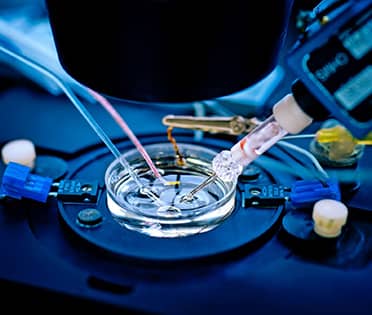
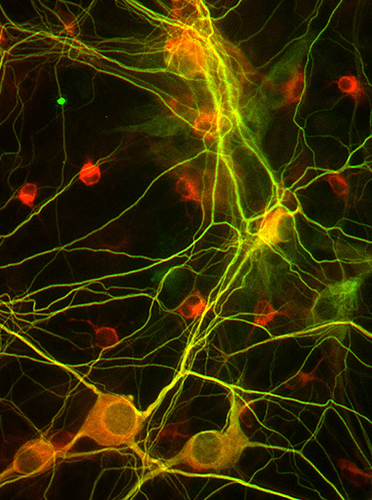
2: Tissues-Culture Skills
During my Ph.D. studies in early 90s, I developed a very successful system for tissue culturing post-natal hippocampal neurons from rat pups at UNSW Sydney Australia. When these neurons were tested later on for their electrical properties, they seemed to behave in a very similar manner to those in vivo.
I have developed a running tissue culture set-up at the United Arab Emirate University and produced videotapes describing systematic tissue culturing process and all essential equipment, chemicals and necessary requirements for establishing a successful tissue culture facility. These videotapes are of equal benefit for Students, Instructors and Researchers. At PCMD, I have contributed in the process of developing Bio-Bank, which is now the source of supplying cells and tissue to the entire academic and research centers of Pakistan for doing research in different areas of Biological Sciences. During setting up these huge in-house and commercial tissue culture facilities, I endeavour to develop and plan medical aspects of culturing neuronal and non-neuronal cells and took initiatives in line with public health. Most important experience I gained during the development of these set ups is to keep the subtle balance between animal / human ethics and its research component.
3: Single Cell RT-PCR (Reverse Transcription Polymerase Chain Reaction)
In order to provide new insights into the architecture of neo-natal brain receptors such as GABAA and glycine receptors in the hippocampus, I have coupled patch-clamp recording and single cell reverse transcription (RT). This step was followed by PCR amplification in order to correlate the presence of mRNAs for each subunit and the functional properties of these receptor channels at the single cell level. I have established two complete RT-PCR set ups in Australia and USA. This technique is relatively complicated and researchers need lot of patience and practice. I have provided thorough technical guidance and advice to research team members in the laboratories of Newcastle, Australia and Philadelphia USA. I also try to develop understandings both in public who were giving body fluid samples and pharmaceutical companies who were providing us with their new drugs to be tested.
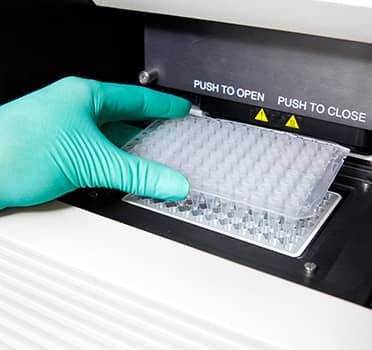
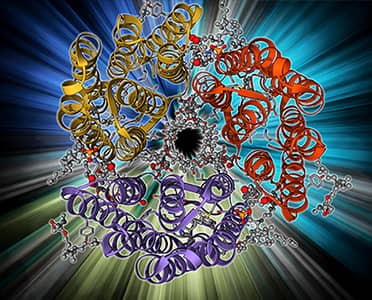
4: Protecmics Experience
I have examined the structure of the pore of 5-HT3R by substituting histidine along its M2 region (the region of the receptor that forms the pore). The imidazole side chains of histidine can reversibly bind with metal-ions (in particular Ni2+) or protons. Examination of the periodicity of the blocking observed by the full series of histidine-substituted residues in the channel helped us to determine the topology (alpha helix, beta-sheet etc.) of the pore region of the receptor channel. I first started my research in this field at the Allegheny University of Health Sciences Philadelphia, USA in 1997. Then I continue doing proteomic based research at PCMD, University of Karachi.
5: Bioinformatic Practice
Due to my interest in the analysis of DNA and Amino acid sequencing and resulting translation between such sequences I had derived pairs of oligonucleotides from published sequences of the original GABAAR, glycineR and 5HT3R cDNAs, and used them to amplify fragments from RNAs isolated from cultured hippocampal neurons using an RT/PCR kit. Full-length cDNA clones, corresponding to GABA, glycine and 5HT3R, been isolated and subcloned. Later on, site directed mutagenesis was performed to study the structure function correlation between wild type and mutant receptor channels.
Characterizations of these GABAA, glycine and 5-HT3 receptor channels could be further clarified by determining bicuculline, strychnine and tubocurarine binding affinities, altered antigenicity and by measuring Ligand binding subunit molecular weight. I would like to do further electro physiology of these receptor channels in the presence of modulatory drugs as to understand cell drug interaction at nanoscale. This information will help us in future to develop highly specific drugs thus leading to more effective and safer pharmaceuticals.

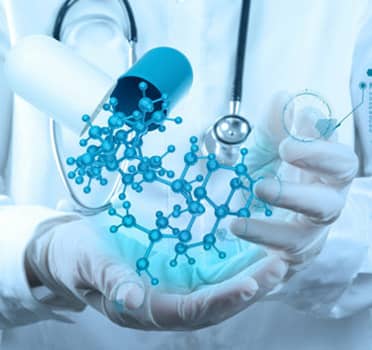
6: Collaboration With Clinical Researchers
At the UAE University, and at PCMD, University of Karachi, I have edited compiled and wrote three books on Laboratory and Personal Safety and run a series of Safety and Ergonomics workshops in the beginning of Teaching Session to “Train the Trainers” from the College of Science and Faculty of Medicine and Health Sciences, UAEU and University of Karachi. A Follow up indicated that the message was delivered to the students and all three books were distributed before the beginning of the academic year. These safety books were distributed to the students of UBD. The proceeding of the workshop is recorded and developed into CDs and Videotapes. Another series of Workshops on Ergonomics were also conducted for the administrative staff at UAEU and in PCMD. While performing these duties I experienced how to keep partnerships with agencies such as “Red Crescent” and others involved in Occupational Health and Safety process.
7: Occupational Health & Safety
At the UAE University, and at PCMD, University of Karachi, I have edited compiled and wrote three books on Laboratory and Personal Safety and run a series of Safety and Ergonomics workshops in the beginning of Teaching Session to “Train the Trainers” from the College of Science and Faculty of Medicine and Health Sciences, UAEU and University of Karachi. A Follow up indicated that the message was delivered to the students and all three books were distributed before the beginning of the academic year. These safety books were distributed to the students of UBD. The proceeding of the workshop is recorded and developed into CDs and Videotapes. Another series of Workshops on Ergonomics were also conducted for the administrative staff at UAEU and in PCMD. While performing these duties I experienced how to keep partnerships with agencies such as “Red Crescent” and others involved in Occupational Health and Safety process.
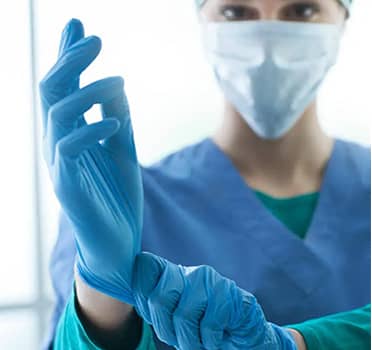
Awards

IBRO-Daegu (2019) (fully paid)

IUPS-RIO (2017) (fully paid)

SFN-Washington (2017) (fully paid)

Global Advocacy grant for Pakistan (2016)

University of Gadjeh Indonesia grant (2015) (fully paid)

New MR-Methods in early diagnosis of Alzheimer’s disease (1,720,000 Brunei dollars per year granted for 3 years 2012-2015 BRC/2)

Travel grant to develop Brunei-German collaboration (2012)

International Drug Abuse Research Society (2010) USA

HEC travel grant (2008)

Full financial support for Biosecurity and Biosafety conference (2007) Bangkok

Who is who in the World (published in 2007)

In vitro and In vivo animal studies of Nigella Sativa extract as an antioxidant in petrochemical pollutant induced oxidative stress (2004-2007)

Graduate Certificate in Educational Studies Scholarship (2000-2001), Australia

RMC Travel Grant (2000), University of Newcastle, Australia

ARC Travel Grant (1999), University of Newcastle, Australia

Allegheny Research Fellowship Award (1996-97), USA

NH&MRC Research Officer/Fellow (1993-98), Australia

University of New South Wales Travel Grant (1995), Australia

NH&MRC Travel Grant (1994), Australia

Young Australian Scientist Travel Grant (1993), Australia

Australian Post graduate Research Award (1990-94), Australia

HEJ strengthening grant (40 million Pakistani rupees)
Research Grants as PI
- Fatima Shad Kaneez (2016) A comparative study of hypertensive and normotensive rats for the detection of biochemical risk factors of ischemic stroke CHT Project Grant UTS Australia ($6,000)
- Fatima Shad Kaneez and Bodo Kress New MR-Methods in early diagnosis of Alzheimer’s disease (1,720,000 Brunei dollars per year granted for 3 years 2012-2015 BRC/2).
- Fatima Shad Kaneez Women in World Neuroscience (WWN) of the International Brain Research Organization (IBRO) approved an award of $2,000 to support symposium titled “Role of Female Neuroscientist in Telemedicine in Brunei” for calendar year (2011).
- Fatima Shad K (2009) Genetic profile of Schizophrenic patients in Pakistan University grant of 3 million Pak Rupees Higher Education Commission Pakistan # HEC 2095
- Fatima Shad Kaneez (2008) HEJ strengthening grant of approximately 40 million Pakistani rupees to established First Patch Clamp set up in Pakistan (this set up is now housed at PCMD, University of Karachi) HEC # 6544 https://www.dawn.com/news/936004/nobel-prize-winning-patch-clamp-technique-in-pakistan
- Fatima Shad Kaneez International Brain Research Organization (IBRO) approved an award of $5,000 to support First IBRO School of Pakistan 25th -30th March 2007
- Fatima Shad K (2007) Patch Clamp Study to Investigate the Chemical Basis of Memory Storage. Start-up grant of 1 million Pak Rupees. Higher Education Commission Pakistan.
- Fatima Shad K, Salman Ashraf, Ali Al-Marzouqi, Madduri V. Rao and Abdu Adem In vitro and In vivo animal studies of Nigella Sativa extract as an antioxidant in petrochemical pollutant induced oxidative stress (2004-2007). Interdisciplinary Research Grant Application # 01-04-2-12/04 (AED 1,857,800)
- Fatima-Shad, K. Interdisciplinary Project Grant UAEU with Faculty of Medicine (2002-2004) # 03/12-8-05-01 Mechanisms underlying the progressive long-term effects of Type 2 diabetes on heart muscle function (AED 1,116,012)
- Fatima-Shad, K. Individual Project Grant UAEU# 01-04-2-11/03 (2002-2003) To establish Post-natal Mammalian Neuronal Systems from different regions of the brain for isolation and identification of Serotonin receptors (AED 185,000)
- Fatima-Shad, K and Dunstan H. (2001-2002) To study electrical currents passing through serotonin receptors in platelet cells derived from patients with schizophrenia. RMC Grant University of Newcastle, ($10,000)
- Fatima-Shad, K. – named Associate Investigator on NH&MRC Project Grant, Barry, P.H. & Moorhouse, A. (1999-2001) Molecular structure-function study of ion permeation through GABA and glycine-gated ion channels ($123, 115 & 117 K/year)
- Clinical Neuroscience Project Grant 1, Fatima-Shad, K. & Dunstan, H (2000-2001) Interaction between hallucinogenic drugs and serotonin: implications for the pathophysiology and therapy of schizophrenia ($25,000)
- Clinical Neuroscience Project Grant 2, Fatima-Shad, K. & Schall U (2000-2001) Serotonin modulation of loudness dependent auditory evoked N1/P2 response (LDAEP) ($25,000)
- Clinical Neuroscience Project Grant 2, Fatima-Shad, K & Schall U (2001) The effects of amphetamine and serotonin challenge on pre-pulse inhibition. ($10,000)
- RMC Grant University of Newcastle, Fatima-Shad, K (2000-2001) A structure-function studies of the 5-HT3 receptor channel for the development of psychotherapeutic drugs ($4,000)
- Fatima-Shad, K. (2000). A Structure-function study of the serotonin (type3) receptor channel for the development of antihypertensive drugs. National Heart Foundation ($5000).
- Fatima-Shad, K. (2000). 5-HT3 receptor channel for the development of drugs targeting ADHD in children. John Hunter Children’s Hospital Research Foundation ($7500)
- Clive & Ramaciotti Foundation, Fatima-Shad, K (1999) A structure-function studies of the 5-HT3 receptor channel for the development of psychotherapeutic drugs ($10,000)
- Equipment Grant University of Newcastle, Fatima-Shad, K (1999) A structure-function studies of the 5-HT3 receptor channel for the development of psychotherapeutic drugs ($17,200)
- Faculty Equipment Grant, University of Newcastle, Fatima-Shad, K (1999) A structure-function studies of the 5-HT3 receptor channel for the development of psychotherapeutic drugs ($11,200)
- New Staff Grant, University of Newcastle, Fatima-Shad, K. (1999) A structure-function studies of the 5-HT3 receptor channel for the development of psychotherapeutic drugs. ($10,400)
- Small ARC Grant, University of Newcastle, Fatima-Shad, K. (1999) A structure-function studies of the 5-HT3 receptor channel for the development of psychotherapeutic drugs. ($9,000)
- Fatima-Shad, K. – named Research Officer on NH&MRC Project Grant, Barry, P.H (1996-1998) A molecular structure-function of GABA and glycine-gated ion channels ($96, 98 & 103 K/year)
